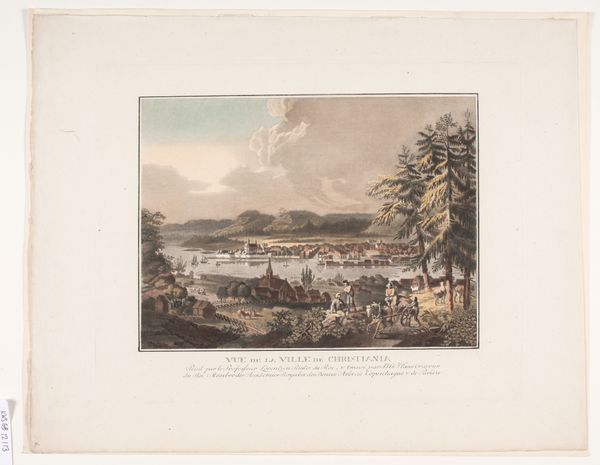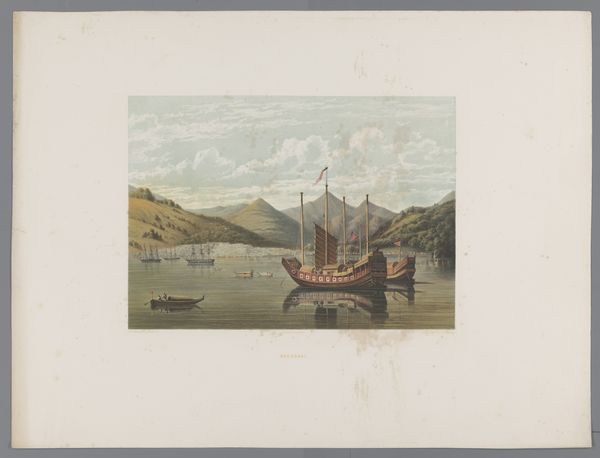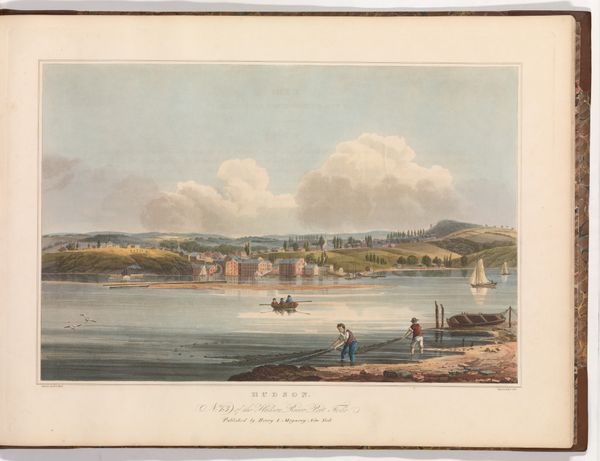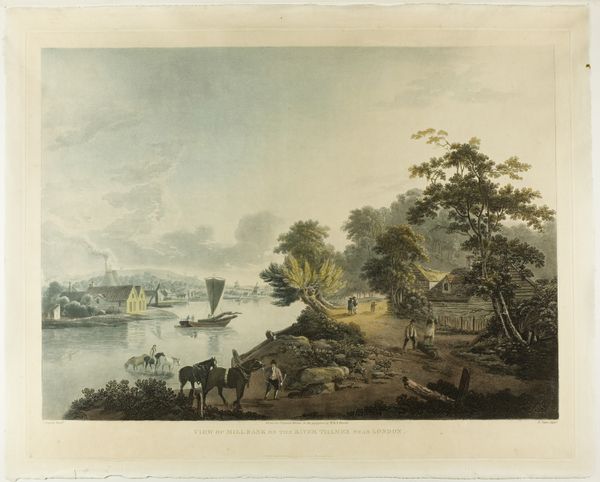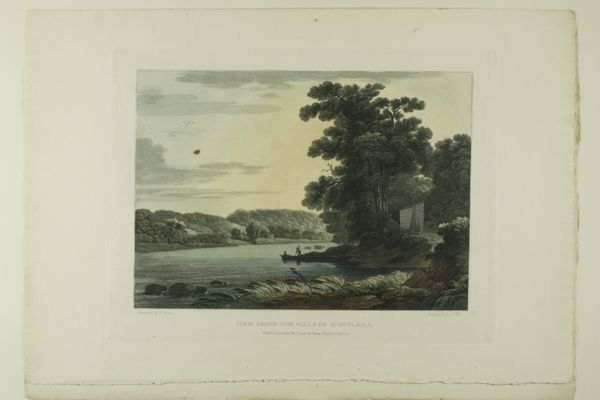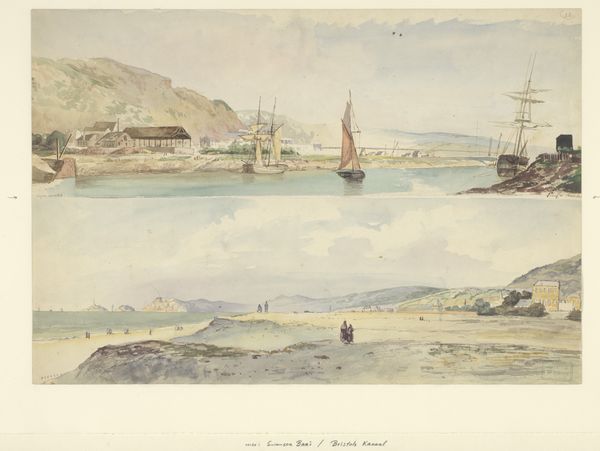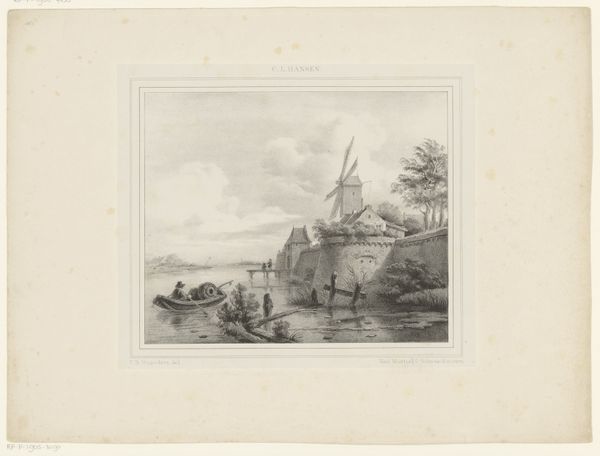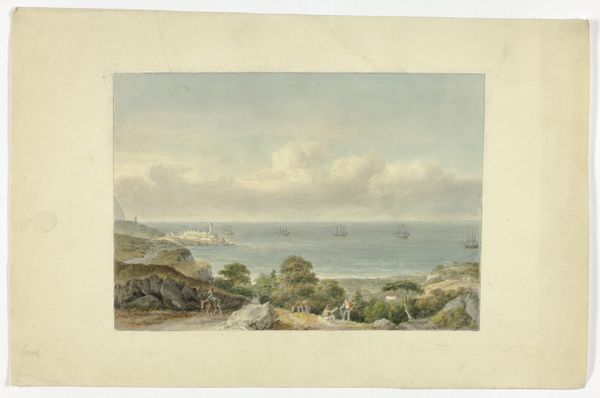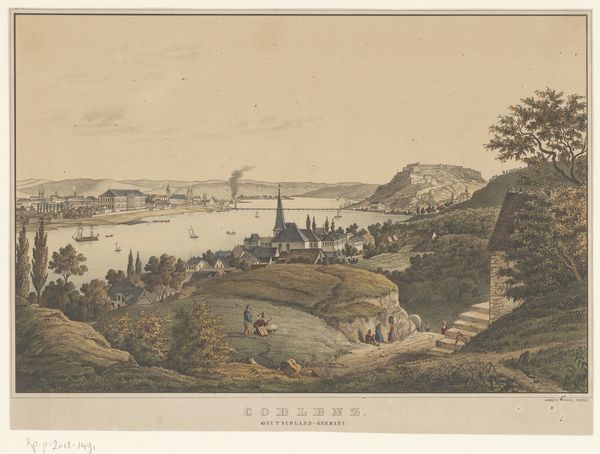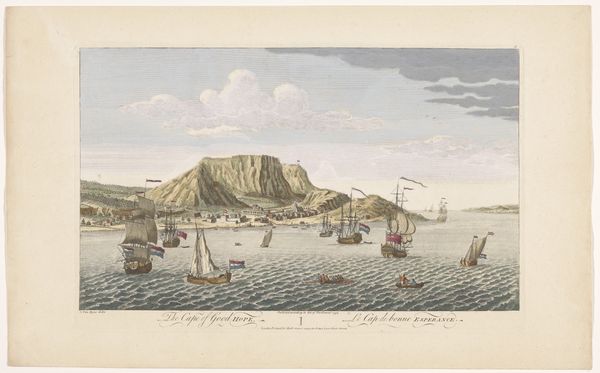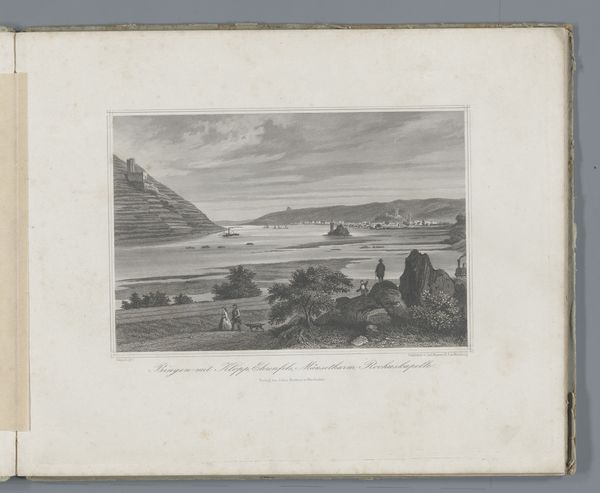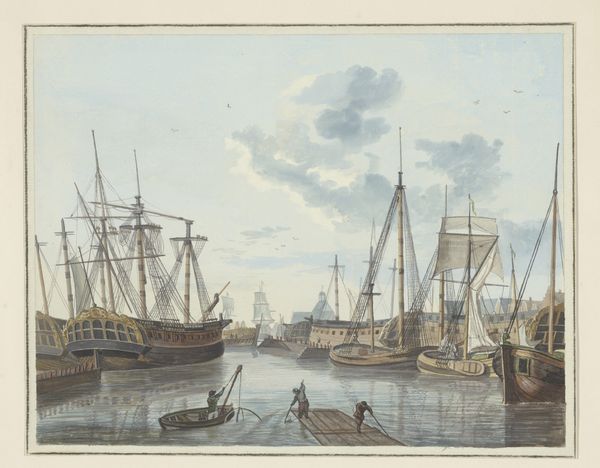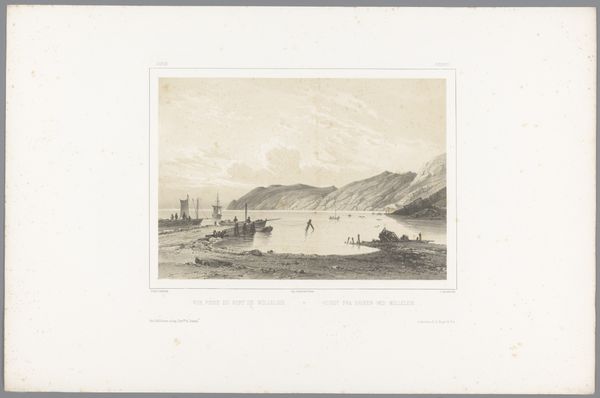
drawing, plein-air, watercolor
#
drawing
#
plein-air
#
landscape
#
watercolor
#
coloured pencil
#
romanticism
#
cityscape
Dimensions: height 408 mm, width 514 mm
Copyright: Rijks Museum: Open Domain
Curator: This serene watercolor drawing, "View of the harbor of Curaçao," was created around 1825 by Reinier Frederik baron van Raders. What strikes you most when you first look at it? Editor: Well, besides its rather muted palette, I'm struck by the distinct separation between the people on the shore, seemingly "at rest", and the frenetic activity of the harbor beyond. It almost feels like a commentary on class. Curator: An interesting reading! Van Raders, though born into nobility, took an interesting path—abandoning his military career for a life dedicated to plein-air drawing. You really feel the Romantic spirit of that decision here. It’s almost cinematic. Editor: Cinematic, and colonial, of course. We have to consider the context of the Dutch presence in Curaçao at this time. While van Raders may have been pursuing a personal, artistic quest, he was also capturing a scene of imperial power. This is a very one-sided visual record, remember. Who do you think he was painting this for, really? Curator: Certainly, this picturesque view romanticizes the harbor and perhaps softens the edges of a far more complex history of exploitation. The drawing shows us a composition of people, boats, and buildings... yet remains silent on everything else that went into making it run. There's something ghostly and incomplete about that silence. Editor: Exactly! Think about the labor needed to operate that harbor, who those laborers were, and what their experience might have been. I mean, where's the historical accounting for that in such paintings, generally? These harbors weren’t only built on picturesque vistas; they were built on the backs of subjugated populations. The soft, pretty tones only mask that violence. Curator: Indeed. It challenges us to not only appreciate its aesthetic beauty but also interrogate its historical underpinnings. The artwork captures a moment, but moments are built on histories and lived experience. Thanks for helping to fill in those crucial aspects for us, especially here, with all of the drawing's careful omissions!
Comments
No comments
Be the first to comment and join the conversation on the ultimate creative platform.
